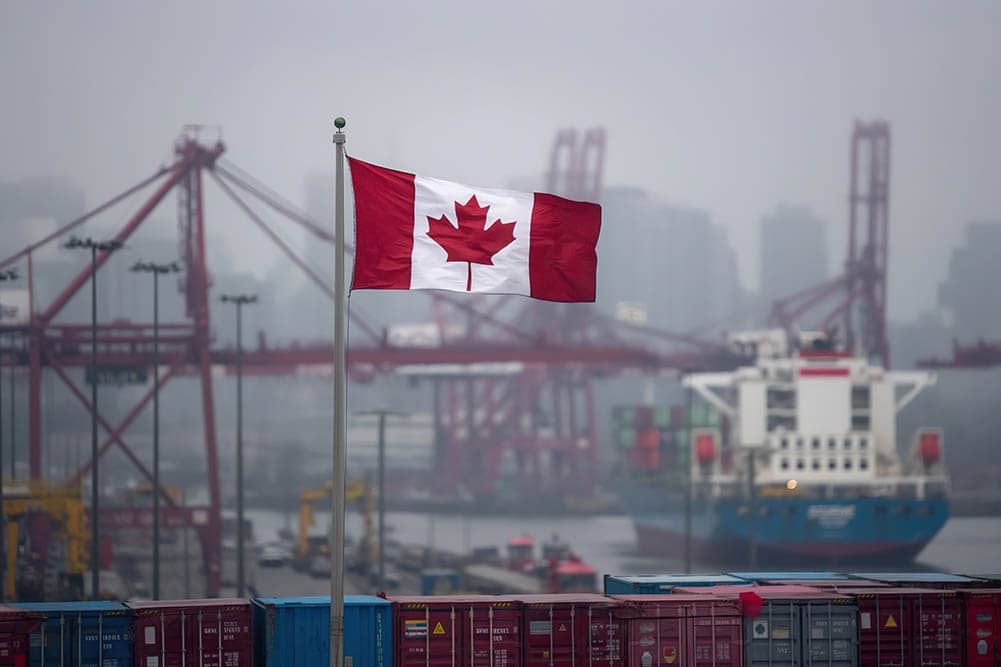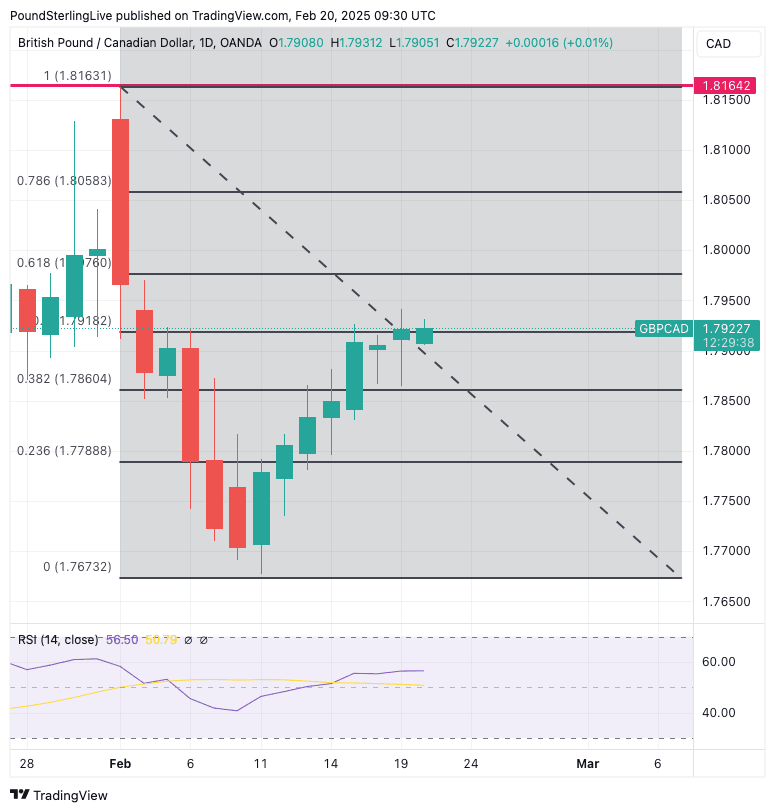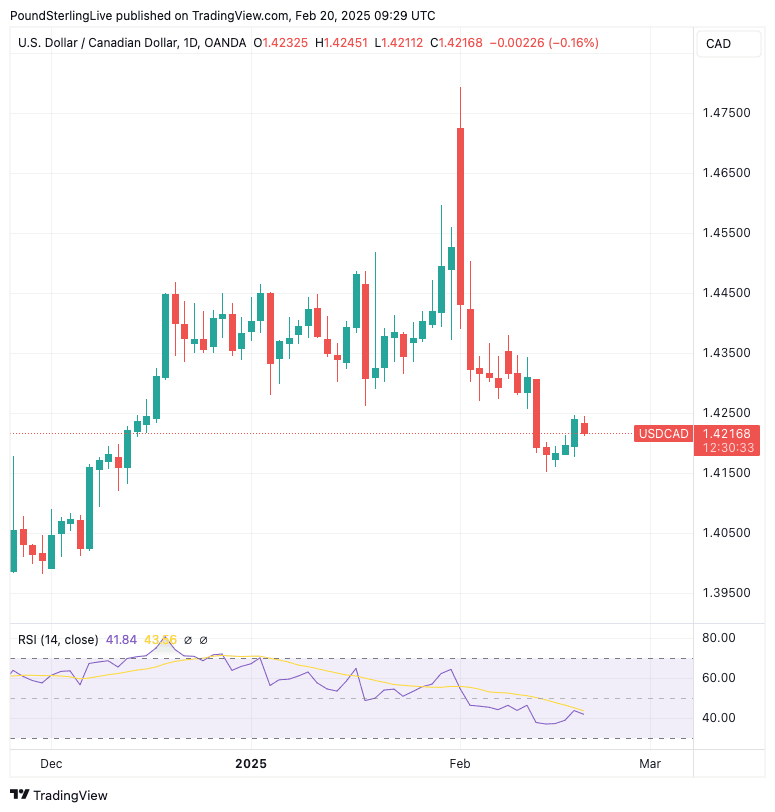
Image © Adobe Images
The Canadian Dollar has rallied on expectations that harsh U.S. tariffs will be avoided, but this hope might be misplaced, say analysts.
"The CAD’s resilience relies upon a hope that the US will not impose broad import tariffs on Canada," says a monthly FX note from HSBC. "This creates a dangerous asymmetry for CAD weakness from here."
Forecasting a notably weaker CAD by year-end, HSBC warns that "in some circumstances, hope is a dangerous thing. For the CAD, it creates an asymmetry for renewed CAD weakness were those hopes to prove misplaced."
U.S. President Donald Trump has signed executive orders imposing tariffs on imports from Canada, Mexico, and China. The tariffs were initially set to take effect on February 4, 2025. However, following negotiations, the tariffs on Canadian and Mexican imports were paused for 30 days, delaying their implementation until March 4, 2025.
The Pound-to-Canadian Dollar rate (GBPCAD) has been drifting higher in anticipation of the March tariff negotiation outcomes, suggesting some caution in the market. The pair is now set to register eight days of consecutive gains, having reached 1.7926.
Above: GBPCAD at daily intervals showing the pair has only retraced 50% of the move that followed news tariffs were delayed.
However, GBPCAD's recovery still appears to be a retracement of the frantic CAD buying that pushed GBPCAD lower after news that Trump had agreed to postpone tariffs on February 03. In fact, GBPCAD has only recovered half its decline, suggesting the tariff premium is still far lower than it was at the start of the month.
Turning to the Dollar-to-Canadian Dollar exchange rate (USDCAD), there was a spike to 1.4793 as the market feared the U.S. would hit Canada with import tariffs on February 03, but the postponement triggered a relief rally in CAD that has sent the exchange rate back to 1.4213.
"USDCAD is on the cusp of becoming interesting again as volatility, skew, and spot have all moved significantly lower and we are now 10 days away from the March 1 deadline for 25% tariffs on Canada and Mexico. While these are viewed as somewhat of a farce by most people in the market, they are still lingering!" says Brent Donnelly, Spectra Markets.
HSBC thinks all outcomes point to further CAD weakness. "Our year-end forecast of 1.60 for USD-CAD assumes that the threatened tariffs are imposed."
Thomas Ryan, North America Economist at Capital Economics, points out that even if the 25% tariff on all goods scheduled for March 4th is postponed again, Canada is still set to face the same tariff on steel and aluminium exports to the US just weeks later.
"Added to that, despite only minor differences in how the two countries tariff each other's imports, Canada might not be exempt from President Trump's new reciprocal tariff plan," he explains.
Above: USDCAD at daily intervals.
According to HSBC, even a benign tariff scenario opens the scope for further CAD weakness.
"If we are wrong, and a lasting deal is struck between the US and Canada that rules out higher tariffs (rather than merely delaying the threat), then we would expect USD-CAD to finish the year at 1.45," says the Bank.
According to Anthony Scaramucci, the financier and political figure who briefly served as the White House Communications Director during President Donald Trump's first term, worst-case tariff outcomes will be avoided.
"There’s lots of splashing in the water, lots of theatrics, but I don't think he's going to ever really get there. And I don't think he's ever going to fully impose the tariffs that he's talking about," he said in an interview with Saxo Bank.
Scaramucci points out that the U.S. get lots of our energy and our electricity from Canada.
"You're getting 78% of the aluminum for our car manufacturers from Canada. Do you want to stop all of the production? I think it's a lot of bombast and I think when those policies meet the impact of the stock market, Trump is going to blink. And as he should, because he'll put the world into a recession," he adds.
Spectra's Donnelly says the interesting question is whether the market will even bother to rally USDCAD into March 1, or whether the credibility of the threat is now so low as to be irrelevant to traders.
"With nothing priced, it’s probably worth considering the possibility of a last-second runup in USDCAD as March 1 nears. Even if nobody believes the threat, it will be the path of least regret to have something on just in case," he adds.


